Fermenting Beer with White Labs WLP802 Czech Budejovice Lager Yeast
Published: October 18, 2025 at 4:31:53 PM UTC
White Labs WLP802 Czech Budejovice Lager Yeast is a key lager strain for Southern Czech-style pilsners and related lagers. It's favored for its clean, dry finish and balanced hop bitterness. The yeast has an attenuation of 70–75%, medium flocculation, and a moderate alcohol tolerance of 5–10%.
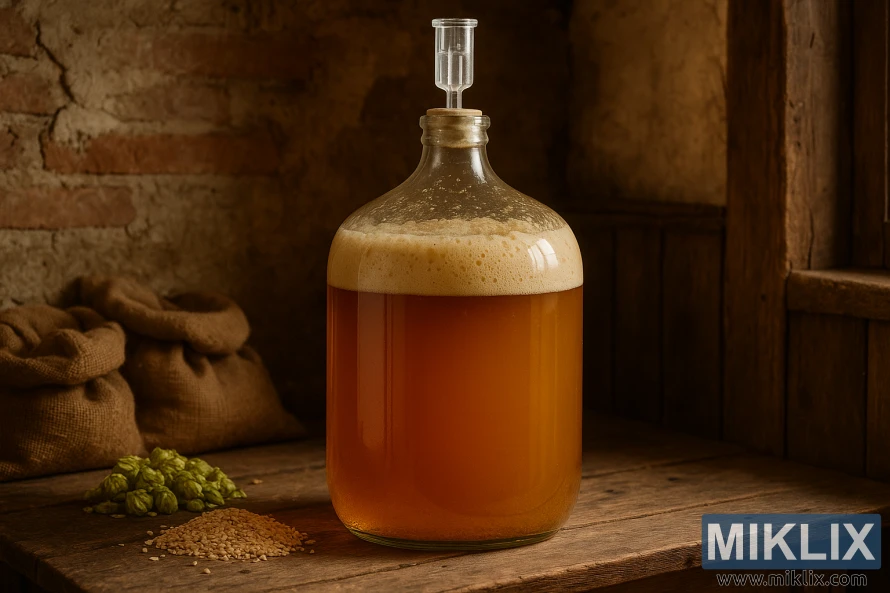
WLP802 makes fermenting Czech lager accessible for homebrewers and small craft breweries. It thrives in a temperature range of 50°–55°F (10°–13°C) and has a STA1 QC negative result. This results in low diacetyl and quick conditioning, ideal for Pilsner, Helles, Marzen, Vienna, bocks, and darker lagers that require clarity and a subtle yeast presence.
This review aims to provide brewers with clear expectations on performance, suggested uses, and fermentation observations. The following sections explore fermentation behavior, starter and pitching guidance, and practical tips for achieving authentic Budejovice results without excessive lag time.
Key Takeaways
- WLP802 is optimized for Southern Czech-style pilsners and produces a crisp, clean lager profile.
- Expect 70–75% attenuation, medium flocculation, and 50°–55°F ideal fermentation temperatures.
- Low diacetyl production makes conditioning simpler and speeds lager finishing.
- Suitable for a wide range of lagers from Pilsner to Schwarzbier and doppelbock styles.
- Designed for homebrewers and craft brewers seeking authentic Czech Budejovice character.
Overview of White Labs WLP802 Czech Budejovice Lager Yeast
WLP802 overview: This pilsner lager strain originates from the southern Czech Republic. It aims to produce dry, crisp lagers with a clean finish. Brewers appreciate its low diacetyl production and balanced mouthfeel. These traits enhance a rounded hop bitterness without overpowering the malt character.
White Labs lager strains, including WLP802, are QA-classified. It is listed as Part No. WLP802, Type: Core. Lab results confirm STA1 negative and standard quality markers are on file. These checks ensure brewers can rely on predictable fermentation behavior when planning lager batches.
Typical fermentation metrics for WLP802 include attenuation around 70–75%, sometimes reaching 80% under optimal conditions. Flocculation is medium, and alcohol tolerance ranges from 5–10% ABV. These figures guide yeast management for both light pilsners and stronger lagers like Bock.
Czech Budejovice yeast characteristics make WLP802 versatile across many lager styles. It is recommended for Pilsner, Pale Lager, Helles, Märzen, Vienna Lager, and darker lagers. Brewers often choose WLP802 for any Lager where a clean backbone and subtle hop clarity are desired.
Buyer information: WLP802 is available through White Labs, with packaging options listed on product pages. An organic purchase option is sometimes available for brewers seeking certified ingredients. This supply consistency makes WLP802 a popular choice among both professional and home brewers.
Fermentation characteristics and performance
WLP802 attenuation typically ranges from 70–75%, with some brewers achieving up to 80% under perfect conditions. This level of attenuation results in a dry beer. It allows the hop bitterness and crisp finish to shine through.
The flocculation of this strain is medium, striking a balance between clarity and fermentation reliability. It settles enough to enhance beer clarity but still leaves cells in suspension. These cells are crucial for completing fermentation and ensuring a proper diacetyl rest.
This strain has a medium alcohol tolerance, comfortably handling 5–10% ABV. It's ideal for classic Czech pilsners, American pale lagers, and stronger lagers like Märzen or Bock. For beers above 10% ABV, consider strains with higher alcohol tolerance.
WLP802 is known for being a low diacetyl yeast, simplifying cold conditioning and diacetyl management. It provides a clean, neutral base. This base enhances malt and hop character without adding strong ester or phenolic notes.
Practical lager performance from WLP802 results in crisp, clean lagers that match Czech Budějovice profiles. Its higher attenuation ensures drier final beers. This makes it a great choice for those aiming for a lean, refreshing lager.
Optimal fermentation temperature ranges
White Labs recommends a standard WLP802 fermentation temperature of 50°–55°F (10°–13°C). This range is ideal for traditional Czech lagers. It helps control ester formation and ensures steady attenuation.
Many brewers start cooler, at 48°F (8°C), to minimize esters. Then, they maintain the lager temperature range until fermentation is complete. This mirrors the historic Bohemian method for achieving clarity and balance.
At around 50–60% attenuation, brewers plan a diacetyl rest. They let the ferment rise to about 65°F (18°C). Holding this temperature for 2–6 days allows yeast to reabsorb diacetyl before cooling.
- Warm-pitch alternative: begin at 60–65°F (15–18°C) for a quick start, drop to 48–55°F after 12 hours to limit esters.
- Fast-lager and pressure methods: ferment warmer under pressure, 65–68°F (18–20°C), as an advanced option rather than classic WLP802 usage.
After the diacetyl rest, gradually cool the beer. Aim to drop 4–5°F (2–3°C) per day until you reach a lagering temperature near 35°F (2°C). This slow cooling enhances conditioning and improves clarity.
Adhere to the yeast sheet guidelines and brewer experience when setting the WLP802 fermentation temperature. Adjust within the lager temperature range to suit your recipe and equipment. Remember to include the diacetyl rest temperature step for a cleaner finish.
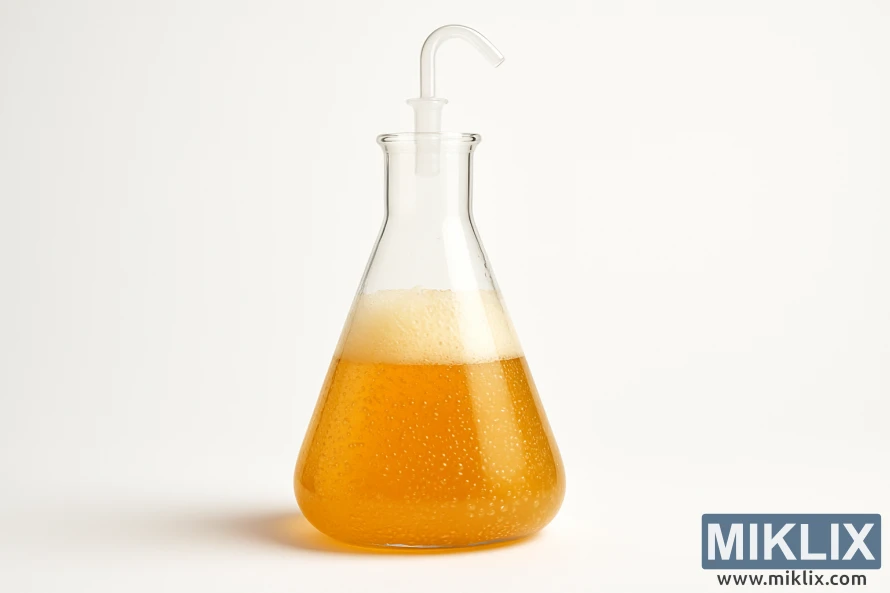
Pitch rates and yeast health for lagers
Proper pitching is crucial for clean lager fermentation. Higher WLP802 pitch rates are recommended due to cold fermentation's impact on yeast activity. This can lead to off-flavors. For repitching, aim for 1.5–2.0 million cells per mL per degree Plato.
Adjustments are needed based on wort gravity. For worts up to 15°Plato, target around 1.5 million cells/mL/°Plato. For higher gravities, aim for 2.0 million cells/mL/°Plato. These cell counts help reduce lag time and ensure steady attenuation.
Temperature choices affect the required pitch rate. Cold-pitching at traditional lager temperatures requires the higher end of the WLP802 range. Warming-pitching, allowing yeast to grow at ale temperatures before cooling, can reduce the inoculation amount. This can be closer to ale-style recommendations, around 1.0 million cells/mL/°Plato.
- Use a pitch rate calculator to convert those targets into total cells for your batch size.
- White Labs offers a pitch rate calculator, and several third-party tools perform the same math for wort gravity and volume.
Packaged lab-grown products can be exceptions. Proprietary offerings like PurePitch® Next Generation often have higher viability and glycogen stores. They may be pitched at lower numerical counts while still delivering reliable performance compared to traditional slurry.
Yeast health is critical. High viability, proper nutrition, and fresh handling shorten lag and limit sulfur and diacetyl formation. Build a starter when viability is uncertain, perform a viability test if available, and store yeast cold and sanitary to preserve vigor.
When planning lager cell counts, track viability and factor in your strain history. Use a pitch rate calculator for precise counts. Pair that data with good starter practice to maintain yeast health across batches.
Making and using yeast starters with WLP802
A yeast starter is crucial for lagers, as cold fermentation slows yeast growth. For WLP802, aim to achieve the right cell count for pitching. This approach is more precise than relying on vague estimates.
For lager starters, aim for 3–5× replication. This range is suitable for most 5–6 gallon batches. Use community advice and BrewDad methods to set realistic growth targets.
- Use a calculator such as BrewDad or White Labs to input OG and batch volume.
- Determine the starting cell count and the final cells needed for the batch.
- Plan one or more steps to reach that target.
Step-up starters reduce risk and increase viability. Start with a small starter, let it grow, then transfer to a larger volume. This method is beneficial when starting from a single vial or a small slurry.
Stir plate starters enhance growth efficiency. They ensure consistent oxygenation and keep yeast suspended for better nutrient access. Combine a stir plate starter with measured oxygenation and a short cold crash for yeast compaction before pitching.
Practical techniques show the importance of measured starters. For a 1.050 wort, many brewers pitch half a lager yeast cake without cell counts. A calculated WLP802 starter often yields better results by matching cell needs. Follow best practices for oxygen and nutrients to support lager strain growth.
Sanitation and viability checks are key to maintaining performance. Keep vessels clean, use sanitary transfers, and consider viability checks for repitching or storing yeast. Microscopy or staining can confirm yeast health for multi-batch reuse.
- Calculate cells needed with BrewDad or White Labs pitch tools.
- Create an initial starter sized for 2–3× growth, monitor activity.
- Step up on a stir plate or larger vessel to reach final cell count.
- Cold crash and decant, then pitch at recommended lager rates.
Adopting this workflow ensures WLP802 performs well in cold fermentations. Proper starter size, the step-up method, and a reliable stir plate starter setup are crucial. They make the difference between a sluggish lager and a crisp, well-attenuated beer.
Repitching and harvesting WLP802 for multiple batches
Repitch WLP802 aiming to double its culture three to five times before reuse. This replication enhances viability and cell counts for the next lager. Plan repitches to allow yeast to rest and rebuild glycogen before cold lagering.
Utilize a brew calculator like BrewDad to determine target cell counts based on batch size and gravity. Divide the required final cell count by the measured cells in your harvested cake to find the repitch fraction. This approach offers a data-driven method over guessing.
Practical repitch ratios stem from brewhouse experience: for a 1.050 wort, brewers often repitch about one-quarter for ales, one-third for German ales, and roughly one-half for lagers. These figures serve as a starting point. Confirm with cell counting and viability checks.
When harvesting lager yeast, collect the flocculated yeast after primary fermentation or at lagering's end. WLP802 exhibits medium flocculation, leading to a moderate cake volume. Scoop under sanitary conditions, cool the yeast quickly, and store it cold to preserve vitality.
Monitor viability and age. Use a microscope with staining or a viability kit to track live cells. Limit repitches to avoid strain drift and contamination. Younger, vigorous cultures perform better in lager fermentations than older, stressed yeast.
If cell mass is low, create a starter to rebuild numbers and restore yeast growth factor and glycogen reserves. A short, well-aerated starter brings harvested yeast back to pitching strength, reducing lag phases in the main ferment.
- Steps for clean harvesting: cool the fermenter, collect yeast into sanitized vessels, minimize oxygen exposure, refrigerate.
- Simple checks: smell and look for off-odors or discoloration, perform a quick viability stain, record harvest date and prior pitch history.
- When in doubt, rebuild: a starter is safer than underpitching for lagers.
Keeping records of repitch ratios, harvest volumes, and viability numbers refines your process over time. Consistent measurement ensures each repitch is predictable, supporting high-quality lager results with WLP802.
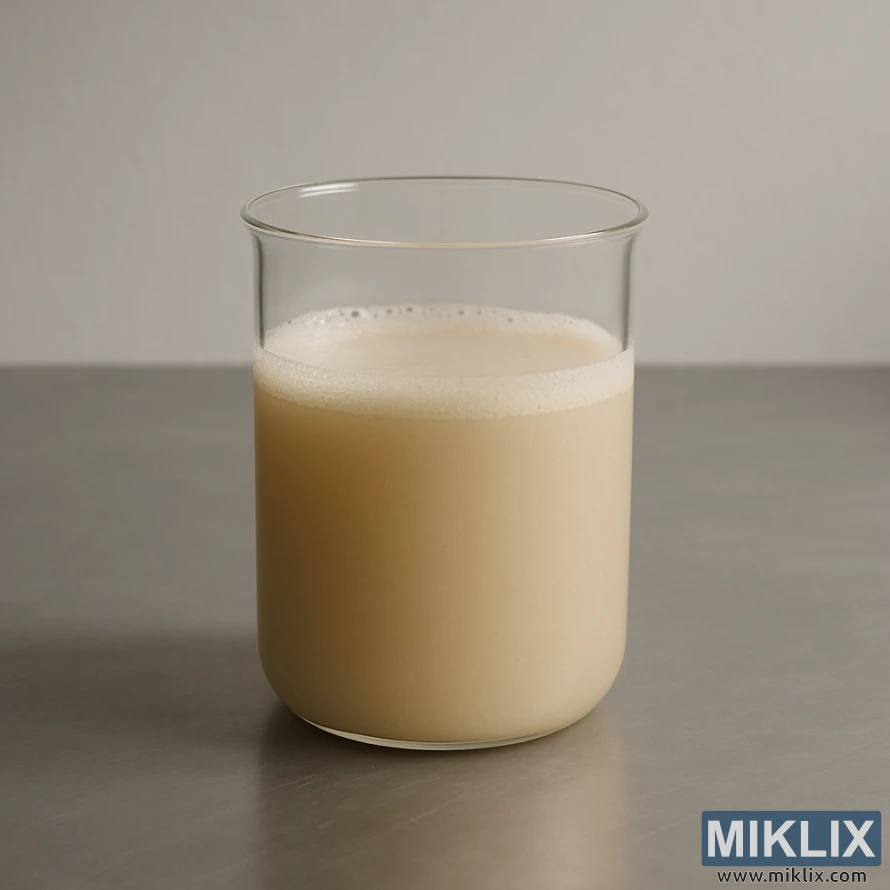
Traditional Czech lager fermenting method with WLP802
Start with a cool, clear wort and add White Labs WLP802 at true lager temperatures. For a genuine traditional Czech lager, employ a slow start between 48–55°F (8–13°C). This approach minimizes ester and sulfur production, resulting in a clean, rounded flavor.
Adopt a controlled fermentation timeline. Begin fermentation at 46–54°F (8–12°C) and allow it to rise naturally. Once attenuation hits 50–60%, warm the beer to about 65°F (18°C) for a diacetyl rest. This should last 2–6 days or until diacetyl is fully reabsorbed, as confirmed by sensory checks.
WLP802’s low diacetyl output simplifies the rest, yet it remains crucial for achieving classic Czech character. Keep an eye on gravity readings and aroma during the rest. This ensures the beer is ready before cooling it again.
Post-diaceetyl rest, gradually lower temperatures. Aim to drop by about 4–5°F (2–3°C) daily until near 35°F (2°C). Maintain this temperature for extended cold conditioning. This step clarifies and smooths the beer, adhering to a standard lagering schedule.
- Pitch: 48–55°F (8–13°C) to start
- Diacetyl rest: free rise to ~65°F (18°C) for 2–6 days
- Lagering schedule: lower 4–5°F per day to ~35°F and condition
For the most delicate Czech-style results, adhere to cooler, longer fermentation and conditioning. Avoid exceeding the diaceetyl-rest temperature for strict Czech tradition. This method ensures WLP802 produces clarity and the subtle malt-hop balance characteristic of classic Czech beers.
Alternative fermentation methods for faster results
Fast lager methods can significantly reduce turnaround time without sacrificing drinkability. One effective approach is the warm pitch WLP802 method, which shortens lag time and accelerates early growth phases. Pitch at 60–65°F (15–18°C) for about 12 hours, then lower to 48–55°F (8–13°C) to manage ester formation.
Consider a brief free rise to 65°F (18°C) near the end for a diacetyl rest. Afterward, cool slowly to traditional lager temperatures for conditioning. When employing warm pitch WLP802, be prepared to adjust pitch rates and closely monitor fermentation.
- Pitch slightly more yeast than usual to shorten lag phase.
- Keep sanitation tight to avoid off-flavors from faster cycles.
- Use a blow-off or airlock until you lower temps to limit pressure stress.
Pseudo-lager Kveik strains offer a unique fast route. Kveik ferments clean at ale temperatures, delivering a lager-like finish swiftly. This method sacrifices traditional Czech character for speed and convenience. Opt for Kveik when time is of the essence over strict authenticity.
High-pressure lagering is another method for accelerating schedules. Set a spunding valve to about 1 bar (15 psi) to ferment warmer, around 65–68°F (18–20°C), while reducing volatile metabolite formation. After reaching terminal gravity, follow standard cooling and lagering steps to clarify and mellow the beer.
- Monitor CO2 and temperature carefully during high-pressure lagering.
- Expect slower visual clearing under pressure; plan longer cold conditioning if clarity matters.
- Confirm fermentation is complete off pressure before extended cold storage.
Fast lager methods come with trade-offs. They speed up production but can alter flavor balance. Warm pitch WLP802 retains more of the strain’s profile than Kveik, but you must adjust schedules to maintain a clean finish.
Practical tips for any fast method include choosing flocculent adjunct strains for clarity, managing diacetyl rests deliberately, and giving extra attention to yeast health. By combining smart pitching, pressure control, and staged cooling, you can shorten time without compromising quality.
Mashing and recipe considerations to complement WLP802
Begin with a traditional grain mix for a Czech pilsner. Use a primary Pilsner malt, with Vienna or Munich added for color and malt depth. This approach ensures the yeast's flavor remains prominent.
Focus on a clean grain bill for WLP802. Aim for 90–95% base malt to maintain brightness. Include 3–5% Carapils or light crystal for head retention and a touch of sweetness.
Choose a mash temperature that aligns with the WLP802 profile. Target 148–152°F (64–67°C) for a wort that's moderately fermentable. This results in a drier finish, enhancing the yeast's high attenuation.
- Single infusion mash works for most batch sizes.
- For slightly fuller body, raise mash to the upper end of the range briefly.
- For drier lagers, hold lower mash temps and increase conversion time.
Set the original gravity to typical pilsner levels for balance. WLP802 will attenuate between 70–80%. Adjust specialty malts for a softer finish or more sweetness.
Hopping should emphasize noble varieties. Saaz or Czech-grown Saaz are ideal for authentic flavor. Keep late additions modest to highlight the malt-to-hop balance.
When adjusting hopping for WLP802, remember that high attenuation can accentuate bitterness. Balance IBUs with malt weight and water chemistry to prevent a harsh bite.
For higher-gravity lagers, modify the grain bill for WLP802. Increase base malt and add enzymes or simple sugars as needed. Plan for larger starters, higher pitch rates, and nutrient support for healthy fermentations.
Adjust water to match Czech standards for a true pilsner mouthfeel. Use softer water with low hardness and a sulfate/chloride ratio favoring a touch more sulfate. This enhances hop definition without drying the malt.
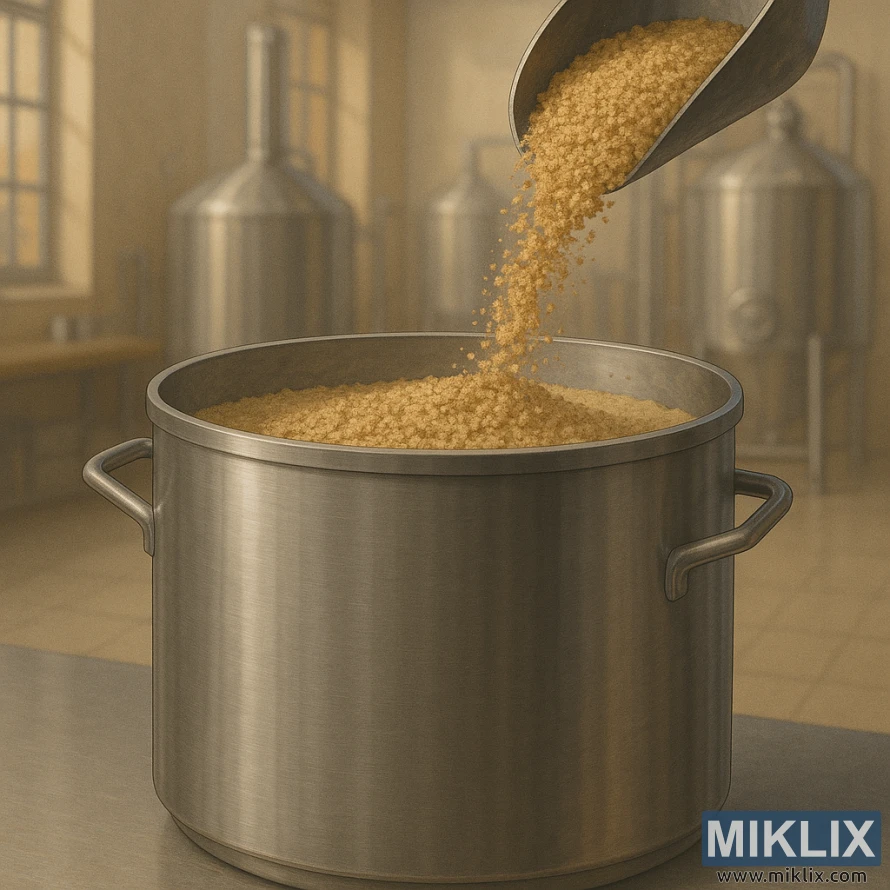
Managing off-flavors and diacetyl with WLP802
WLP802 has a low baseline for diacetyl, but it's not completely absent. Brewers must actively manage WLP802 diacetyl during lager fermentations to prevent off-flavors. This is crucial for maintaining a clean taste in the final product.
Ensuring yeast health is paramount before pitching. Proper oxygenation and nutrients at the beginning support robust fermentation. This helps in minimizing diacetyl formation. An adequate yeast pitch rate is also essential to avoid stressed yeast, which can produce unwanted compounds.
Implement a diacetyl rest when attenuation hits around 50–60%. Allow the beer to free rise to about 65°F (18°C) for two to six days. This period lets yeast reabsorb diacetyl. Keep an eye on gravity and aroma, rather than strict timing.
If diacetyl shows up during lagering, a gentle warming to 65–70°F (18–21°C) for a short time can help. This encourages yeast to clean up the diacetyl. Afterward, return to traditional lagering temperatures for cold conditioning and clarity.
- Keep sanitation tight to prevent infection-driven off-flavors.
- Manage fermentation temperature to limit excess esters from warm pitching.
- Consider pressure fermentation for faster methods to suppress certain metabolites.
Regular checks on yeast health, pitch practices, and oxygenation are key to reducing diacetyl over time. These measures help minimize lager off-flavors, ensuring a clean lager profile with WLP802.
Practical fermentation logistics and equipment tips
Temperature is crucial for lagers. Employ reliable fermenter temp control, such as a glycol chiller, a chest freezer with an Inkbird controller, or a dedicated fermentation chamber. These tools help maintain 50–55°F (10–13°C) during primary fermentation.
Implement a gradual cooling strategy. Lower the temperature by about 4–5°F per day to reach lagering temperatures near 35°F (2°C). This slow approach minimizes yeast shock and enhances clarity.
- Utilize diacetyl rest equipment, including controllers and heaters, to elevate the beer's temperature slightly during fermentation's latter stages for cleanup.
- Set timers or alarms to monitor temperature ramps and rests, ensuring consistent repetition.
Starters and repitching necessitate specific tools. Stir plates and variable-speed magnetic stirrers expedite cell growth. Yeast calculators and simple cell-counting methods enhance pitching accuracy, leading to consistent results.
Pressure fermentation can expedite lager production. Employ spunding valves and pressure-rated fermenters with gauges and relief valves. Always follow safety guidelines and inspect seals before applying pressure.
Cold conditioning demands adequate space. A lagering fridge or cold-conditioning vessel is essential for extended storage and clarity. Kegs serve as a convenient cold-conditioning option, reducing oxygen exposure during transfers.
Sanitation and yeast handling are critical for viability. Harvest yeast with clean tools, store it cold, and minimize oxygen contact during transfers. Track harvested yeast age and use it within documented viability windows for reliable repitching.
- Establish fermenter temp control before pitching and confirm with an independent probe.
- Employ diacetyl rest equipment for a 48–72 hour warm-up near the end of attenuation.
- Gradually transition to a lagering fridge and monitor clarity and gravity before packaging.
Pairing WLP802 with adjuncts and specialty grains
WLP802 offers a clean, lager-like profile, perfect for experimenting with adjuncts. Adding small amounts of flaked maize or rice can lighten the body without obscuring the yeast's character. This method maintains crispness, reduces calories, and minimizes haze.
When it comes to specialty grains for pilsner, use them sparingly. A small percentage of Carapils or dextrin malts can enhance head retention and mouthfeel. Vienna or Munich malts, in small amounts, add subtle bready notes, ideal for Vienna lagers or Märzen-style beers. It's crucial to keep specialty grain percentages under 10% to avoid overwhelming the base.
Adjusting the mash profile is essential when pairing lagers with adjuncts. WLP802 tends to ferment dry, so slightly increasing the mash temperature can help retain body. Balance hop bitterness and aroma to complement the adjunct's taste, as hops are more pronounced in drier finishes.
When brewing stronger lagers like Bock or Doppelbock, add specialty sugars or darker malts with caution. Monitor the original gravity and yeast stress, as higher alcohol levels require larger pitch rates and bigger starters. WLP802 can handle moderate strength beers but benefits from increased yeast cell counts in high-gravity worts.
Feel free to experiment with non-traditional additions in small amounts. Spices, fruit, or oak will show cleanly with WLP802 due to its neutral character. Allow extra conditioning time after adding adjuncts to ensure flavors integrate and any fermentation byproducts mellow before packaging.
- Keep adjunct levels conservative to protect yeast clarity and flavor.
- Use Carapils or dextrin malts for body and foam stability.
- Match mash temp to desired mouthfeel when planning lager adjunct pairing.
- Increase pitch rate and starter size for high-gravity beers using WLP802 adjuncts.
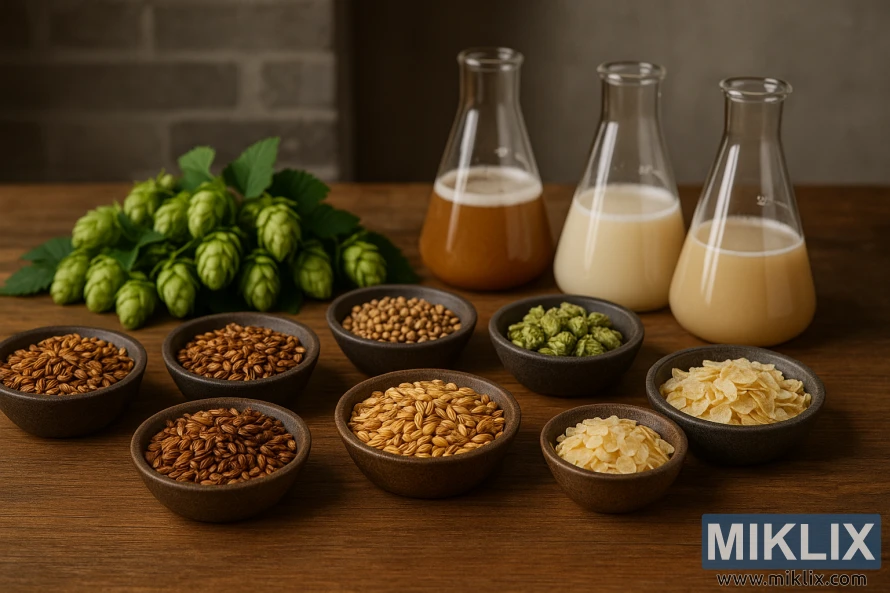
Troubleshooting common issues with WLP802 fermentations
When facing stuck lager fermentation, first assess yeast health. Issues like underpitching, low viability, poor oxygenation, or nutrient deficiencies can slow down fermentation. Warm the fermenter to stimulate yeast activity. Only oxygenate if fermentation has not started yet.
If the gravity barely moves, consider creating a starter with White Labs or Wyeast yeast for repitching. This can revive fermentation and offer practical solutions for slow attenuation.
To address diacetyl, implement a short diacetyl rest. Hold the beer at 65–70°F (18–21°C) for a few days. This allows yeast to reabsorb vicinal diketones, fixing diacetyl before returning to lower lager temperatures.
Stalled attenuation at intermediate gravity often points to underpitching or incorrect fermentation temperature. A controlled warm-up can reactivate yeast. If problems persist, repitching a healthy starter is a reliable solution.
Off-flavors may indicate contamination or stressed yeast. Phenolic, sulfur, or sour notes usually result from microbes or extreme temperature fluctuations. Smell and taste tests help determine whether to recondition or discard the batch.
- Ensure proper sanitation and cooler fermentation practices to prevent infections.
- Use oxygenation at wort transfer and provide necessary nutrients for WLP802.
- Follow White Labs pitching recommendations to minimize the risk of stuck lager fermentation.
For clarity and flocculation issues, remember WLP802 is medium flocculent. Extended cold lagering, time for settling, or fining agents can clear haze. Patience during conditioning often enhances the final polish.
To avoid common problems, use a short prevention checklist. Ensure correct pitch rate, healthy starter when needed, accurate temperature control, proper oxygenation, and yeast nutrients. These steps can significantly reduce the need for troubleshooting WLP802 later on.
Comparisons to other White Labs lager strains
WLP802 and WLP800 represent the intersection of Czech tradition and pilsner versatility. WLP802 targets the dry, crisp finish of Budejovice lagers, with minimal diacetyl and medium flocculation. In contrast, WLP800 aims for a pilsner character, adaptable to various ester profiles and attenuation levels based on lineage and mash composition.
In a White Labs strain comparison, consider the yeast's attenuation and flavor focus. WLP802 typically achieves 70–80% attenuation, maintaining a clean, slightly malty backbone typical of Czech pilsners. German strains like WLP830 and WLP833, on the other hand, offer more ester complexity and different attenuation, better suited for helles and bock styles.
Strain selection is influenced by process constraints. WLP925 High Pressure Lager Yeast is ideal for fast, pressurized lagering, allowing for quicker timelines. WLP802, by contrast, excels under traditional temperature programs and longer lagering periods to achieve clarity and dryness.
American and German options provide alternative outcomes. WLP840 American Lager Yeast and WLP860 Munich Helles offer distinct flocculation and ester notes. Opt for WLP802 for a genuine Czech lager yeast, perfect for authentic Czech-style pilsners and similar lagers.
- Choose WLP802 for a true Budejovice profile and low diacetyl.
- Use WLP800 when a pilsner-versatile strain or different ester balance is preferred.
- Pick WLP925 for accelerated, high-pressure programs.
- Try WLP830 or WLP833 for German-style esters and different attenuation.
This White Labs strain comparison aids in selecting the right yeast for your recipe goals and production constraints. Match the yeast's characteristics to your fermentation schedule, desired dryness, and the level of Czech authenticity you aim to achieve.
Conclusion
White Labs WLP802 Czech Budejovice Lager Yeast stands out for its crisp, dry finish and low diacetyl production. It has medium flocculation and can handle alcohols up to 10% ABV. For those aiming at authentic southern Czech pilsner, WLP802 is a reliable choice. It ensures classic Pilsner clarity and subtle malt expression, provided clean water and proper hopping are used.
Its practical fit spans various styles. Use WLP802 for Pilsner, Helles, Märzen, and even darker lagers with adjusted mash and grain bills. The yeast's ability to enhance noble hop notes while maintaining a dry finish makes it a top pick for Czech pilsners.
Proper process is crucial. Focus on lager-specific pitch rates and starter planning, aiming for 3–5× growth. Maintain controlled temperatures, include a diacetyl rest, and lager slowly for balance. With sound pitching calculators and harvest/repitch practices, WLP802 will deliver consistent, authentic lager results. It's a dependable choice for traditional Czech-style lagers with careful technique.
Further Reading
If you enjoyed this post, you may also like these suggestions:
- Fermenting Beer with Wyeast 1084 Irish Ale Yeast
- Fermenting Beer with Bulldog B34 German Lager Yeast
- Fermenting Beer with CellarScience Monk Yeast
